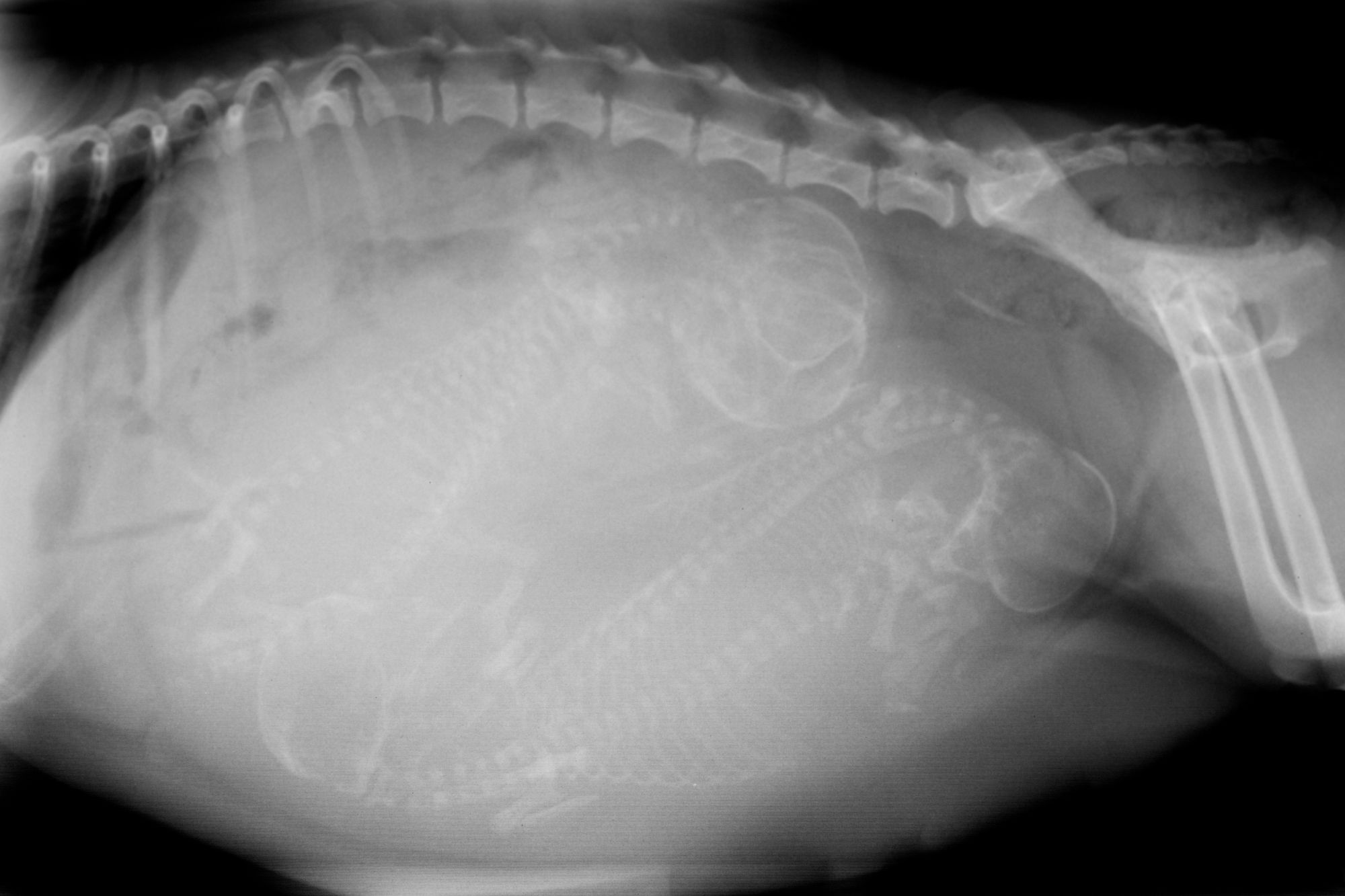
Are you eagerly anticipating the pitter-patter of cute little paws in your home? Wondering how long it takes for your furry friend to have puppies? Look no further – this comprehensive guide has all the answers you need! Whether you’re a new or seasoned dog owner, understanding the gestation period and the signs of labor is essential to ensure a smooth and successful birthing process.
In this article, we will walk you through the entire journey, from conception to the birth of adorable puppies. You’ll learn how long it takes for dogs to have puppies, the key stages of pregnancy, and the signs that labor is approaching. We will also discuss the average size of the litter and provide tips on how to properly care for your pregnant dog.
From the early stages of mating to the moment those tiny bundles of joy arrive, this guide will equip you with the knowledge and confidence to support your dog every step of the way. So, let’s dive in and discover the magical journey of canine motherhood!
Understanding the canine reproductive cycle
The canine reproductive cycle is a complex process that involves several stages. It begins with the female dog, also known as the bitch, going into heat. Heat, or estrus, is the period during which the bitch is receptive to mating. This stage typically lasts for about 2 to 3 weeks and is characterized by changes in behavior and physical appearance. During this time, the bitch may become more affectionate, display heightened interest in male dogs, and have a swollen vulva.
Once the bitch is in heat, she will attract male dogs who are also in search of a mate. Mating usually occurs during the fertile period of the bitch’s heat cycle, which is around the 9th to 14th day. During mating, the male dog’s sperm fertilizes the eggs released by the female dog. This fertilization takes place in the bitch’s reproductive tract.
The stages of pregnancy in dogs
Dogs have a unique reproductive cycle that consists of several stages. To understand how long it takes for a dog to have puppies, it’s crucial to familiarize yourself with these stages. The reproductive cycle begins with the heat cycle, also known as estrus. During this phase, the female dog is receptive to mating and can become pregnant. The heat cycle typically occurs every six to twelve months, depending on the breed.
Once the female dog has successfully mated, fertilization occurs. The fertilized eggs then travel to the uterus, where they implant and begin to develop into puppies. This process is known as gestation. The duration of gestation can vary depending on several factors, including the breed, size, and health of the dog. On average, the gestation period for dogs is around 63 days, but it can range from 58 to 68 days.

Factors That Can Affect the Duration of a Dog’s Pregnancy
While the average gestation period for dogs is approximately 63 days, it’s important to note that this can vary depending on various factors. One such factor is the breed of the dog. Different dog breeds have different gestation periods. For example, smaller breeds tend to have shorter pregnancies, while larger breeds may have longer pregnancies.
The age and health of the dog can also impact the duration of pregnancy. Older dogs may have longer pregnancies, while dogs with certain health conditions may have shorter pregnancies. Additionally, the number of puppies in the litter can affect the length of gestation. Larger litters may require more time for development, resulting in a longer pregnancy.
Understanding these factors can help you better anticipate the arrival of your puppies and ensure you are prepared for the birthing process.
Average Gestation Period for Different Dog Breeds
As mentioned earlier, the gestation period for dogs can vary depending on the breed. While the average gestation period is around 63 days, it’s important to be aware of the specific gestation periods for different breeds. Here are some approximate gestation periods for popular dog breeds:
1. Chihuahua: 58-63 days
2. Beagle: 58-68 days
3. Labrador Retriever: 58-68 days
4. Golden Retriever: 58-68 days
5. German Shepherd: 63-65 days
6. Bulldog: 58-63 days
It’s important to note that these are general guidelines, and individual dogs may have variations in their gestation periods. Consulting with your veterinarian is always recommended to get accurate information specific to your dog’s breed and health.
Signs and Symptoms of an Approaching Labor in Dogs
As your dog’s due date approaches, there are several signs and symptoms that indicate labor is imminent. Recognizing these signs will allow you to prepare for the birthing process and provide the necessary support for your dog. Here are some common signs that labor is approaching:
1. Nesting behavior: Your dog may start to create a nesting area, gathering blankets, towels, or other soft materials to prepare a comfortable space for giving birth.
2. Temperature drop: A few hours before labor begins, your dog’s body temperature may drop below 100°F (37.8°C). Monitoring your dog’s temperature can help you predict when labor will start.
3. Loss of appetite: As labor approaches, your dog may lose interest in food. This is normal and is a result of the hormonal changes in her body.
4. Restlessness or pacing: Your dog may become restless and pace around, unable to settle down. This is a sign that she is preparing for labor.
5. Vulva swelling: The vulva may become swollen and appear larger than usual as the body prepares for delivery.
6. Nesting behavior: Your dog may start to create a nesting area, gathering blankets, towels, or other soft materials to prepare a comfortable space for giving birth.
7. Temperature drop: A few hours before labor begins, your dog’s body temperature may drop below 100°F (37.8°C). Monitoring your dog’s temperature can help you predict when labor will start.
8. Loss of appetite: As labor approaches, your dog may lose interest in food. This is normal and is a result of the hormonal changes in her body.
9. Restlessness or pacing: Your dog may become restless and pace around, unable to settle down. This is a sign that she is preparing for labor.
10. Vulva swelling: The vulva may become swollen and appear larger than usual as the body prepares for delivery.
These signs may vary slightly from dog to dog, but they generally indicate that labor is imminent. It’s important to keep a close eye on your dog and provide a calm and comfortable environment for her during this time.

What to Expect During the Labor and Delivery Process
Once labor begins, it’s essential to be prepared and know what to expect. The labor and delivery process in dogs typically consists of three stages: early labor, active labor, and delivery of the puppies. Here’s a breakdown of each stage:
1. Early labor: During this stage, your dog may appear restless and may start nesting. You may notice her panting, pacing, or digging. The cervix starts to dilate, and contractions begin. This stage can last anywhere from 6 to 12 hours.
2. Active labor: In the active labor stage, contractions become stronger and more frequent. Your dog may start to push and strain as each puppy moves through the birth canal. This stage can last anywhere from 2 to 24 hours, with each puppy being born around 30 minutes to an hour apart.
3. Delivery of the puppies: Once active labor begins, the puppies will start to arrive. Each puppy is enclosed in a fluid-filled sac, which the mother will usually break open with her teeth and lick the puppy clean. The mother may take short breaks between delivering each puppy. The entire delivery process can take several hours, depending on the size of the litter.
During the labor and delivery process, it’s important to provide a quiet and calm environment for your dog. Avoid unnecessary disturbances and provide her with plenty of water and food. If you notice any signs of distress or complications, contact your veterinarian immediately.
Potential Complications During Dog Pregnancy and Labor
While most dog pregnancies and deliveries proceed smoothly, there can be potential complications that require immediate veterinary attention. Some common complications include:
1. Dystocia: This occurs when the mother is unable to deliver the puppies naturally. It can be caused by the size of the puppies, the shape of the mother’s birth canal, or other factors. Dystocia is a medical emergency and requires immediate veterinary intervention.
2. Prolonged labor: If labor lasts longer than expected, it can indicate a problem. Prolonged labor can be caused by various factors, including a large litter, weak contractions, or a puppy getting stuck in the birth canal. Veterinary assistance may be necessary to ensure a safe delivery.
3. Retained placenta: After delivering each puppy, the mother should pass the placenta. If a placenta is retained, it can lead to infection or other complications. It’s important to monitor the placenta passing and consult with your veterinarian if any are retained.
4. Maternal health issues: Dogs with pre-existing health conditions may be at a higher risk of complications during pregnancy and labor. It’s important to inform your veterinarian about any health issues your dog may have to ensure proper monitoring and care throughout the process.
Postpartum Care for the Mother and Puppies
After the delivery, the mother dog will require proper postpartum care to ensure her recovery and the health of the puppies. Here are some essential tips for postpartum care:
1. Provide a quiet and comfortable space: Create a calm and secure area for the mother and puppies. Keep the area warm and free from drafts.
2. Monitor the mother’s health: Check the mother for any signs of infection, such as fever, discharge, or loss of appetite. Keep an eye on her behavior and ensure she is eating and drinking properly.
3. Observe the puppies: Monitor the puppies for healthy nursing behavior. They should be nursing frequently and gaining weight. If you notice any puppies struggling to nurse or appearing weak, consult your veterinarian.
4. Proper nutrition: The mother will require a high-quality diet to support her recovery and milk production. Consult your veterinarian to ensure she is receiving the appropriate diet.
5. Regular veterinary check-ups: Schedule postpartum check-ups for both the mother and the puppies to ensure their overall health and well-being.

Frequently Asked Questions About Dog Pregnancy
1. Can dogs get pregnant during their first heat cycle?
– Yes, dogs can get pregnant during their first heat cycle. It’s important to closely monitor your dog during this time to prevent unwanted pregnancies.
2. How long should I wait before breeding my dog again?
– It’s generally recommended to wait at least one heat cycle before breeding your dog again. This allows her body to fully recover before going through another pregnancy.
3. Can I spay my dog while she is pregnant?
– Spaying a pregnant dog is not recommended unless it’s a medical emergency. Consult with your veterinarian for guidance if you are considering spaying your pregnant dog.
4. How many puppies can a dog have in one litter?
– The number of puppies in a litter can vary depending on the breed and the individual dog. Smaller breeds tend to have smaller litters, while larger breeds may have larger litters. On average, a litter can range from one to twelve puppies.
Conclusion
Welcoming a litter of adorable puppies into the world is an exciting and rewarding experience. Understanding the journey from conception to birth is essential for providing the best care for your pregnant dog. By familiarizing yourself with the stages of pregnancy, the signs of labor, and potential complications, you can ensure a smooth and successful birthing process.
Remember to provide a calm and comfortable environment for your dog during labor and delivery, and seek immediate veterinary assistance if you notice any signs of distress or complications. With proper care and attention, you can support your dog and witness the miracle of new life as those tiny bundles of joy enter the world. Happy motherhood!
Happy Pets | Happy Owners | Happy Sitters
Related posts
 The Ultimate Guide: How to Determine if Your Dog is Pregnant from the Comfort of Your Home
The Ultimate Guide: How to Determine if Your Dog is Pregnant from the Comfort of Your Home
 10 Adorable Facts About French Bulldog Puppies
10 Adorable Facts About French Bulldog Puppies
 Everything You Need to Know About French Bulldog Puppies
Everything You Need to Know About French Bulldog Puppies
 Labradoodle Puppies: The Sweetest Addition to Your Family
Labradoodle Puppies: The Sweetest Addition to Your Family
 Can Dogs Eat Pecans? Here’s What You Need to Know
Can Dogs Eat Pecans? Here’s What You Need to Know
 All You Need to Know Before Getting a German Shepherd Puppy
All You Need to Know Before Getting a German Shepherd Puppy
